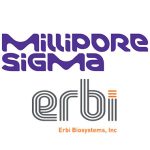In August 2023, Medtronic received CE Mark approval for its Inceptiv closed-loop rechargeable spinal cord stimulator (SCS) — the first Medtronic SCS device to offer a closed-loop feature — for the treatment of chronic pain. The device senses the body’s neural response to stimulation 50 times per second, and decreases stimulation when neural response increases, such as when the patient coughs, sneezes, or bends, to prevent over-stimulation.
Last month, Medtronic presented new clinical data at the North American Neuromodulation Society (NANS) Annual Meeting, showing efficacy in patients with chronic low back pain and leg pain. “Improvements in Health-Related Quality of Life in Chronic Back/Leg Pain Patients with Closed-loop SCS” found that 86% of subjects preferred closed-loop compared to conventional SCS (open-loop technology) with 100% reporting satisfaction with the therapy for pain relief.
Data from “24 Month outcomes of Pain Relief and QoL from EU RCT comparing Medtronic’s DTM to CMM in patients with no prior history of spine surgery” demonstrated the long-term superiority of Medtronic’s Differential Target Multiplexed (DTM) SCS stimulation waveform compared to conventional medical management for patients who are not candidates for spine surgery, with 77% of patients reporting reduced chronic low back pain with DTM SCS.
We spoke with Ashwini Sharan, M.D., Chief Medical Officer of Medtronic’s Neuromodulation Division, to learn more about the development of the Inceptiv system and how the company plans to further incorporate closed-loop technologies in its neuromodulation pipeline.
The Inceptiv closed loop spinal cord stimulation (SCS) system received its CE mark in Europe in 2023 and is currently under FDA review. What were some of the challenges in developing a closed loop SCS device?
Dr. Sharan: The body is an incredibly noisy environment. People are belching and breathing, the heart is pounding, the intestines are making noise, so the challenge from a technology perspective has always been ‘what are the brain and spinal cord doing, and can we record that?’ That’s the big challenge that engineering had to figure out—how to filter the signal from the noise.
Historically, spinal cord stimulation has been just bombarding the spinal cord with signals to inhibit the pain processing so you can have pain relief. But people are constantly moving, and you can overstimulate or under-stimulate because the electrode moves relative to the spinal cord with every breath and every motion. Evoked compound action potential (ECAP) was an inflection point in engineering because it allowed us to develop a technology with sensing that allows us to figure out what the spinal cord is doing.
Our Inceptiv closed loop spinal cord stimulator is not yet FDA approved. It has been released in Europe and Japan, and we are quantifying the effects through a study in these regions. What we are learning is that we can prevent overstimulation.
In the data you presented at NANS, patients shared how much more comfortable it was to not have that overstimulation. What do patients experience when the nerves are over-stimulated?
Dr. Sharan: Imagine when you cough. You suddenly move and have an uncomfortable sensation. When there is over-stimulation, patients get muscle fatigue, cramps in their muscles, and headaches because you are stimulating all the structures around the spinal cord.
Patients don’t want to interact with their devices. It’s like a hip implant. Once you get it, you can walk and run without thinking about it. We want spinal cord stimulation technology to get to that level. That is our aspiration.
In addition to the closed-loop technology, the Inceptiv has a rechargeable battery that, if you recharge it on a regular basis, is a 15-year battery. The rechargeable systems allowed us to dramatically decrease the battery size, which allows for a lower profile device that is much better tolerated.
Looking at neuromodulation in general, how does this prevent pain or make the pain go away?
Dr. Sharan: For you to perceive pain the signal has to get back to the brain and be emotionally and physiologically understood. You have many different types of sensors in your hands, for example, that measure pressure, vibration, and heat. When you stimulate any one of these, they take the sensation through the brain and the spinal cord, and there is processing happening at the spinal cord. Then you to decide, do I move my hand or run away from the pain? The system is designed so that when these circuits come in through the nerves and through the ganglia, and eventually, the spinal cord, it interacts and preferentially some signals go to the brain. We send a signal to the spinal cord and then measure the spinal cord’s reaction back. We are measuring the physiological signal of conduction through this segment of the spinal cord, and then we can change the amplitude of the signal to change that conduction.
That’s what you saw fundamentally change when we started playing with different frequencies about a decade ago. Our technology is called Differential Target Multiplexed (DTM) spinal cord stimulation (SCS). We use a combination of high frequency and a low frequency wavelength, so we’re dosing the spinal cord in two different manners. We’re activating different parts of the spinal cord, so it is an additive effect that is reducing the pain by blocking some of the signals.
So, it isn’t determining whether to stimulate or not, but it can change the level of stimulation?
Dr. Sharan: It can change the level of stimulation. You’re almost asking the next generation stuff, which is ‘can we use that signal that we’re detecting off the spinal cord to understand what is happening better?’ And that is still to be determined.
The data presented at NANS mentioned a reduction in opioid use following use of the Inceptiv system. Is that something you’ve seen historically with the open-loop SCS, and how are you tracking that?
Dr. Sharan: Opioids are a therapy that reduces pain and improves quality of life. It is a pain management decision that the physician and the patient take on. Because there is a dependency issue with the opioids, we did not look at it as a primary outcome measure, but we are noticing that there is a reduction in opioid use.
In relation to the closed-loop SCS, are you collecting data for real world evidence to better perfect the system?
Dr. Sharan: The actual physiological data off the spinal cord we are collecting only on a research basis. It is not being collected from a real-world evidence perspective right now. The real-world evidence that we are linking to the closed-loop spinal cord system is in Promis-29. Promis-29 is a patient-reported outcome measure that was developed by the NIH about a decade ago, and they are looking at seven domains of health— physical function, fatigue, pain interference, depressive symptoms, anxiety, ability to participate in social roles and activities, and sleep disturbance.
It is not just about understanding, from a physician perspective, ‘are we reducing the pain?’ You also need to look at all these other variables that the pain affects as part of your care. And these are reported by the patient through an app.
One of the most interesting data points that we are seeing from studies being done in Europe is a dramatic improvement in quality of life for these patients.
Inceptiv is unique in that it offers “MRI access.” What are some of the opportunities and limitations for patients who may need an MRI?
Dr. Sharan: Once a person has chronic back pain and spinal cord stimulation, about 80% of these patients are going to require an MRI within five years and 98% within 10 years. That’s staggering because if you don’t have a system or technology that is MRI compatible, the patient may have to be ex-planted.
We spent a lot of time on the engineering to improve the MRI compatibility. Technically, the term we use is MRI conditional, because there are many situations that could negate the ability to get an MRI. Our system is designed so that even if there are broken contacts, the system can shut it off and you can still get an MRI. If the battery is not fully charged, you can get an MRI. If you’re lying on your stomach, such as when women get MRIs for their breasts, you can still do the MRI. So, there are conditions that have to be met.
In addition to spinal cord stimulation for pain relief, Medtronic is also working on closed-loop deep brain stimulation (DBS). How does this technology differ from the Inceptiv technology?
Dr. Sharan: We have been researching brain stimulation for about a decade. There are a lot of disease states that are episodic in nature, and if you can identify what those episodic problems are, then you should be able to sense them and stimulate to address them. For example, we realize that patients with Parkinson’s disease go through times when they have no symptoms and times when they have more symptoms. So, we looked at different patterns of signals or different frequency responses, called the beta band signal. In Parkinson’s patients, stimulating during the beta band signal reduces the slowness of the movement. That’s what we’re on label for right now with the Percept DBS system, and people are researching this technology in many other disease states including depression, epilepsy, and for pain. We have already done a study to look at closed-loop feedback for Parkinson’s Disease, and that is going to be submitted to the FDA.
In terms of the closed-loop technologies overall, people should look at it as a little bit of a historical next step. If you want to reduce the burden on the patient, you need a device that the patient does not have to interact with, and the more a patient uses a therapy for chronic pain, the more it helps them normalize their lifestyle, and this is what we are already seeing in Europe.







